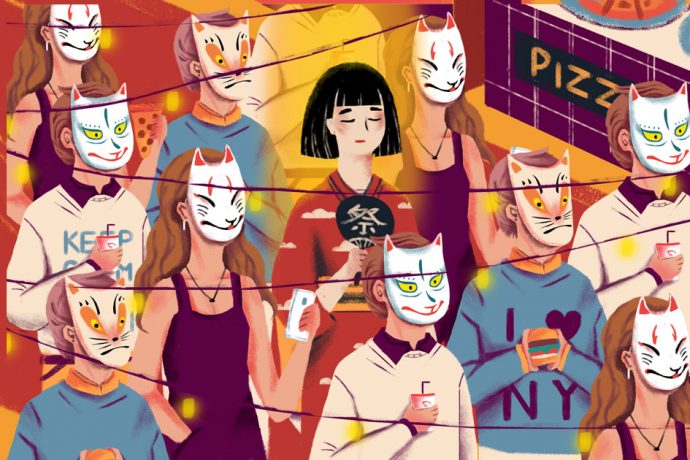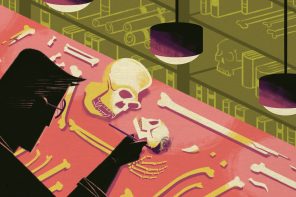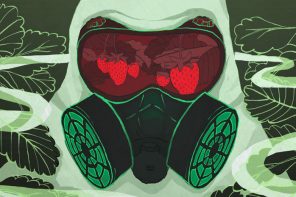In the typical way we search for lost persons these days, via Google, I try to find Robert Hashima. There seems to be a Robert S. Hashima, born September 24, 1920 and deceased April 2, 2009, and that might be him. The Hashima I’m looking for is the kibei whose stories and opinions informed the work of Ruth Benedict’s The Chrysanthemum and the Sword. A writer and political thinker, C. Douglas Lummis, who lived and taught in Japan, wrote about his interview with Hashima and how Hashima’s viewpoints, living as a student in the prewar years of a militarizing Japan, must have influenced Benedict’s thinking. If Hashima died in 2009, I’ve missed meeting him. Well, I’ve missed meeting a lot of people whose lives mattered to me in ways impossible to know. But back to the Google search; perhaps a photograph of Hashima will show up in “images,” but what I find are aerial maps and photographs of concrete wreckage that remind me of Alcatraz. Turns out to be Hashima Island, also known as Genkanjima or Battleship Island, somewhere off the Nagasaki coast. I scrutinize the photos and recognize the final scenes of 007 in Skyfall in which a blond Javier Bardem faces off with Daniel Craig, who manages to fist fight, hurtle rooftops, and escape bombs and bullets without ever soiling or tearing his pinstripe sharkskin suit. How does 007 fall into that ruined island fortress of a crumbling prison and coal mining facility where Mitsubishi industries forced the wartime labor of hundreds of conscripted Koreans and Chinese prisoners? Hell, it’s probably not on location, but only a CGI backdrop. Still, I imagine sooty faces under helmets crouched claustrophobic in narrow shafts deep under the ocean, picking, picking rich black veins of coal. But what has this got to do with Robert Hashima? Nothing and everything.
I think about Ruth Benedict’s anthropologic extraction of Bob Hashima’s experience as a young second generation Japanese American sent by his parents to be educated in Japan. Hashima made it home before 1941, got incarcerated with all the other Japanese Americans, then became an assistant to Benedict at the Office of War Information. Apparently what impressed Benedict was Hashima’s ability to give nuance to an incident in Natsume Soseki’s novel Botchan. You have to admire Benedict for never having been to Japan but getting it by reading its literature. There are cited some notes and translations by, and a recognition of, Hashima in Benedict’s book. I know my parents read The Chrysanthemum and the Sword. There was always a copy of it in our library den. I read it too and thought it was the bible about what it meant to be Japanese, like samurai: beautiful and violent with intricate categories of duty, obligation, and shame. Until I visited and lived in Japan, I had no idea how all of this might be true, but also cockamamie. And until now, I never thought about how Benedict’s work was also maybe a mix of literary criticism and fiction. There is something endearing, though likely only for the novelist, about occupying a people with their own fiction. But never mind arguing whether or not fiction is true; it is the speculative aspect of the anthropological project here that intrigues me, how in fact an investigation of culture might predict human reactions and outcomes. Benedict was hired to predict and therefore, to occupy, the future.
Did her work predict, for example, Godzilla? The first Godzilla or Gojira film came out in 1954, two years after the end of Japan’s occupation. Even if you’ve only watched one Godzilla movie, you know Tokyo or some great cosmopolitan city and its infrastructures will have to be squashed back to stone-age ruination. This is an absolute must, but when you watch the first Godzilla, you realize that maybe you are seeing actual footage of Tokyo during its wartime firebombing, and then you think that every other Godzilla, even the cheesiest version, must be a reenactment of that trauma and catastrophic loss. Even after the occupiers are gone, the reenactment is hidden in a movie about a big fake dragon/dinosaur.
When the Herman Melville Society convened its international conference this past year in Tokyo, the insignia for that event was a graphic of Moby-Dick rising in the same sea with Godzilla. Indeed, in the imagination of the Pacific as imperial frontier and manifest destiny, a century later, Godzilla must be Moby-Dick’s most terrible and revitalized replacement. The pursuit of the whale was about oil refined from its blubber, while the pursuit of Godzilla signaled the atomic age, our nuclear present. The great leviathan and the great dragon/dinosaur are primeval prehistoric cyphers, paradoxically, for technology and the precarity of human omnipotence and arrogance. Even if Benedict could not predict Godzilla as recurring trauma, she, like Herman Melville, followed the enigma of the great white whale to Japan.
Recently, the famous theoretical physicist, Stephen Hawking, had this to say in a BBC interview: The development of full artificial intelligence could spell the end of the human race . . . Humans, who are limited by slow biological evolution, couldn’t compete, and would be superseded. In thinking about this and considering that Japan is likely at the forefront of this technology of artificial intelligence, or AI, I proposed at the International Melville Conference, of all places, that our contemporary Moby-Dick-turned-Godzilla now has a very different and even benign or cute look. The great leviathan has become this: Hello Kitty. And this, I think, is a turn that Benedict might have predicted. The end product of Melville’s 19th century of discovery: a plastic doll. Well, maybe. That is to say, that occupying a people under the auspices of chrysanthemum and sword might mean that people play out the chrysanthemum in order not to suffer, again, the sword.
Japanimation, or the animation of the two-dimensional manga world, is a world of fantastic escape, bizarre or torturous sexual pleasure, magical monsters, romantic immaturity, pederasty, transformer warriors, alternative universes and futures, heroes and ghosts. If your previous world changes forever, if you experience your own extinction, maybe this kind of escape is inevitable. Japanimation is now reproduced for and sold to foreign audiences with binaries of beauty and violence that exceed Benedict’s contradictions. Even when the presentations are asexual and plastic, the commodification is not. For example, when performance artist Denise Uyehara created the show Hello (Sex) Kitty: Mad Asian Bitch on Wheels, I tried (though not very hard) in Tokyo to procure for her a Hello Kitty dildo, which I was told, with some certainty, certainly existed. While we were buying Sanrio’s Hello Kitty, My Melody, and Little Twin Stars in every rendition from erasers to watches (and maybe dildos), our counterparts in Tokyo became living dolls in extravagant costuming, from Lolitas to gyarus. The last time I bought a Japanese music CD, it was produced by the girls band AKB48 (for Akihabara with 48 singing/dancing girls). If you look closely, they might be girls, but most likely they are young women in their twenties dressed in pink fluff with anklets in pink patent leather Mary Janes. Then come to find out that a principal singer, Aimi Eguchi, was not just a virgin, but a CGI composite. My friend told me that Aimi Eguchi, despite not being a real person, appeared on television to apologize to her fandom for not being real.
A fake person apologizes. You might wonder about this. At least I do, since I’m always insinuating to my students that they need to be responsible for their writing, even though they can always plead fiction. The author is never dead, and even when you’re dead, some critic will come around and say you were a sexist techno-orientalist. Okay, they might say the writing was sexist techno-orientalist, but it’s still your dead writing. Can you get off the hook if your character apologizes?
Sometime, post 9/11, after the turn of the century, when Sailor Moon turned into a live action television show, that is from a cartoon to real actors, I drove my mother Asako up to San Jose Japantown for the summer Obon/Nisei Week festivities. This is supposed to be a Japanese American festival celebrated in August in all Japantowns, Nihonmachis, Little Tokyos, and Japanese American cultural centers, churches, and temples across the country. When we get there, it’s afternoon, and Asako is a bit irritated at me for arriving late, and probably we’ve missed stuff, like the parade and dances. I get her seated at a table near 5th and Jackson, in front of a stage set up across from the Buddhist Temple. Maybe there’ll be a karate or kendo demonstration or enka singing or a bonsai class or taiko drums, anything to make Asako think this rare trip out of hippy Santa Cruz to our culture is worth it. I go foraging for food, skipping from booth to booth, and I can’t believe it. No Japanese food. No nigiri, no teriyaki sticks, no tempura udon, no unagi donburi, not even spam musubi. Okay, there are snow cones and strawberry shortcake, but no manju. I return with plates of chashu bao, pizza, German sausage, and spaghetti, and she looks at me like, what? She reminds me for the fifth time, “We came too late.” Like you have to get here early (nisei time) for the real stuff; they only make so much, then close down. Kaput. Owari.
The great leviathan has become this: Hello Kitty.
I look up at the stage, and there are two high school girls up there. One is a Latina, and the other is white. The Latina has on a blonde wig, but the hakujin girl has real hair up in long pigtails. Both are dressed up like baby dolls and singing Japanese. Asako leans over and asks, What language are they singing?
I answer, Japanese.
No, that’s not Japanese, she smirks.
I protest, No really it is. It’s from the cartoons.
She shakes her head and chomps on pizza, cheese glutinate coagulating onto her chin.
I look around for taiko drums, but there is nothing in the wings to save me. Instead, a stream of little girls, maybe between the ages of three and seven, in Sailor Moon outfits, are being persuaded to climb up to the stage. The MC turns out to be the hakujin high school girl in pigtails who sings in Japanese and speaks in English with a cute Japanese accent: Haro boysu and garus, eve-ribudy, comu and joinu usu on stage and retsu dansu togetha. I want my mother to ask me what language she is speaking in now, but Asako’s become disinterested. If only those little girls were wearing kimonos. The music comes on, and it’s the Sailor Moon intro, and apparently there’s a special dance routine that they’ve all been practicing, sort of. I haven’t felt this feeling in years; it’s the same feeling I felt when I entered an LA sushi bar and discovered that all the Japanese clients had turned into white people. Well, that was a long, long time ago. This must be the other end of the end, how everything finally gets swallowed up in a parallel world. When I wasn’t paying attention, I’d been erased. I look at Asako for reassurance, but she’s never going to be erased. We are just plain late. This is some irrelevant after-show.
The cute hakujin blathers on in accented English. I listen carefully. Her syntax is perfect. I think it’s a fake accent. I’m thinking, if it’s fake, this is an outrage. An entire generation of valiant protesting sansei didn’t fight for our ethnic rights to be Asian American and the continuation of Japantown for you to pretend to be Japanese. My head goes cloudy, and I imagine my sister Jane Tomi there next to us, listening and going cross-eyed. This is f’d up, she’d sneer. Yeah, I think, we might be old sansei. We might be post-Asian, but we ain’t faking it. Jane Tomi and I would instantly become dynamic sansei, back to defend the old ways. Make up! We’d meet that cute pigtailed girl in the back of the stage and push her up against the chain-linked fence of the Buddhist temple playground and make her speak real English. You wanna fight, Sailor Moon, huh? Try Sansei Moon! That’s right. I want an apology.
But obviously, it’s all over. Sailor Moon. AKB48. Hello Kitty. I apologize to Asako for getting to Nisei Week late and for staging an imaginary fight with a Japanimation fan with a Japanese accent. Years ago, I tried turning Japanese, but some things are only possible for other generations or maybe robots. The Japanese roboticist Masahiro Mori theorized something called the “uncanny valley,” in which he described the moment in which a computer-generated or humanoid robot, as it becomes more human-like, conjures the sense of the uncanny, an uncanny revulsion in real humans. Mori calls it “uncanny,” which seems to be a polite way of saying repulsive or perverse. Okay, we real humans would prefer not to engage with unreal mechanical humans. Preferable would be R2-D2 or C-3PO, but then maybe not, since the Japanese are making and selling these very real-looking sex dolls for intimate pleasure. Plus, there is AKB48 and Aimi Eguchi.
But how about the Turing Test, proposed by the computer theorist Alan Turing, to evaluate whether a machine might exhibit intelligent behavior indistinguishable from a human? The Turing Test was a part of a recent movie, Ex Machina, in which the protagonist can’t, in fact, tell real robots from the fake, cutting into his own flesh to see if he himself might not also be a robot. What surprises, or rather disgusts, the viewer (me) of Ex Machina is that all the women, in what turns out to be a Blue Beard’s digital castle paradise, are robots, even the mute but dancing Japanese housekeeper/concubine Kyoko.
Of course Ex Machina’s Kyoko is hardly the first to star as an Asian robot. I would say that Star Trek’s Mr. Spock and Data are Asian versions of the uncanny logical robot. How about the replicant Rachel in Ridley Scott’s Blade Runner, whose father is supposedly Chinese? Then there is “cylon number eight” and her many copies in Battlestar Galactica, played by Grace Park. And in the current television series, Humans, check out Gemma Chan as domestic synth, Anita. You can read articles about synth actors having to go to uncanny boot camp to act robotic. Or you can visit Hiroshi Ishiguro’s website and see his humanoids who have participated as actors in dramatic plays by Oriza Hirata. Asian cyborgs and clones abound in our media and literature. What happened to Mori’s uncanny? It’s not just that the robots in the movies are human actors. It is now our assumption that humans can, like the cultivation of the chrysanthemum, be perfect. As I depart on ANA Flight 0172 from Narita, all the matching flight attendants bow with exactly the same gestures, exactly the same smile, the same voices. I could freak out, but it all seems really real. The uncanny valley, like Ex Machina’s digital paradise, is hidden. The Turing Test is unnecessary.
Michio Kaku, in his book, The Future of the Mind, writes that the Japanese “are steeped in Shinto religion, which believes spirits live in all things, even mechanical robots.” And Masahiro Mori of “uncanny valley” fame wrote the book Buddha in the Robot, proposing his belief that robots have the potential to attain Buddhahood. Come to think of it, you can visit Hello Kitty in Sanrio Puroland where she stands in an altar, a blessing bodhisattva. What would Ruth Benedict say?
What would Bob Hashima say? Searching for Hashima, who could have been my dad’s buddy, I find a dead fortress island of ghosts. The next generation of laborers on such an island could be uncanny robots. Will they be programmed with duty, obligation, and shame? Will they apologize for not being real? Will they die when the sword splits their skulls? Will they attain Buddhahood? I am not sure what this means except that I feel uncanny. Just uncanny.
This piece is also considered from a critical perspective in AALR vol. 7, issue 1 (spring 2016).
Karen Tei Yamashita is the author of six books, including I Hotel, finalist for the National Book Award, and most recently, Anime Wong: Fictions of Performance, all published by Coffee House Press. She received a US Artists Ford Foundation Fellowship and is Professor of Literature and Creative Writing at the University of California, Santa Cruz.



